In today’s world, a small mistake in an email can accidentally reveal the personal information of thousands of patients. So how do we ensure that communications are fast yet private? It’s a million-dollar question for healthcare right now. Secure messaging for healthcare isn’t just a nice-to-have addition; it’s key to keeping patient info safe and building trust.
Healthcare professionals need to send messages very fast without letting any private information slip through. It seems like you’re trying to do two things at once, but with the technology we have now, it’s possible. A study at Kaiser Permanente Northern California Oncology revealed that oncologists fielded an average of 19 messages daily from June 1, 2021 to May 31, 2022, with nearly a quarter (26%) traditionally requiring billable visits.
Along with easy access, new challenges arise. “Increased utilization of remote medical care and specifically secure messaging has recently generated additional workload for oncologists that may have been more appropriately managed by alternative providers,” the authors wrote. As a result, physicians’ workload has increased substantially.
In this article, we try to review the idea of secure messaging in healthcare and discover the possibilities of its utilization and effects on the care business.
What is Secure Messaging in Healthcare?
Secure text messaging for healthcare involves the use of secure communication platforms designed specifically for the exchange of health information between healthcare providers and between providers and patients. These platforms encrypt communications to ensure that sensitive information such as patient health records, diagnosis and treatment plans remain private and accessible only to authorized individuals.
This isn’t just fancy technology; it’s a critical response to the strict patient privacy rules set by laws like HIPAA (Health Insurance Portability and Accountability Act). HIPAA doesn’t just suggest; it mandates that all patient information shared electronically must be protected from unauthorized eyes. Technologies that enable secure messaging assure patients that their secrets are safe, even in a world where digital communication is ubiquitous.
Reflecting its growing importance and adoption, recent market analysis forecasts a significant expansion in the secure messaging healthcare sector that will reach a value of USD 3,501.6 Million by 2034. This forecast stresses the growing demand for secure messaging solutions in healthcare and highlights the industry’s proactive approach to protecting patient information and building trust in healthcare communications. Additionally, hospitals start charging patients for this. Considering the message cost range of $10 to $100, managing these communications can significantly impact healthcare revenue.
Yet, for each neurologist, “it is another couple hours of work added on to every single day,” said Wendy Van Fossen, CEO of the Neurology Center. “It’s really become that patients treat (the portal) more like text messaging. You answer the question, they come back with another question. In many cases, they ask questions that are really more appropriate for a visit.”
Benefits of Secure Healthcare Messaging Software
Despite the new challenges that have arised, secure messaging brings tons of benefits to the table. It transforms the traditional communication landscape into a streamlined, safe, and user-friendly experience. Let’s explore the benefits this tool delivers.
Automate Key Touchpoints
Picture this: a system that automatically sends appointment reminders, follow-up care instructions, and prescription refill notices. This isn’t a glimpse into the future; it’s what secure healthcare messaging software offers today. By automating these critical interactions, healthcare providers can guarantee consistent communication without the burden of manual tasks, and enhance patient adherence to treatment plans and follow-up schedules. “We promote our My Health at Vanderbilt portal, and we want patients to communicate with us this way,” Dr. Charles said. “We want them to feel that they are not only heard but that they are answered.”
Avoid Fines
The statistics reveal a concerning reality: 2021 was a challenging year for data breaches, with 45.9 million records breached. Unfortunately, 2022 saw an increase to 51.9 million records breached. However, 2023 shattered all previous records, with an astonishing 133 million records exposed, stolen, or otherwise impermissibly disclosed.
With strict adherence to privacy laws like HIPAA in the United States, this software ensures that all communications are encrypted and secure. This protects patient information and saves healthcare providers from hefty fines associated with data breaches.
Improve Provider Collaboration
Secure messaging software bridges the gap between different healthcare providers, allowing for instant sharing of patient data, test results, and care plans. This seamless exchange fosters a more unified approach to patient care, leading to quicker, more informed decisions and, ultimately, better patient outcomes.
The numbers speak for themselves: a study published in the Journal of Medical Internet Research found nurses were the most frequent users of secure messaging (40% messages), followed by physicians (25% messages), and medical assistants (12% messages). Additionally, median response time was 2.4 minutes with the largest proportion of inpatient messages being from nurses to physicians (20% messages) and physicians to nurses (13% messages).
Patient-Centric Contact Center
The landscape of patient interaction is evolving rapidly, underscored by a compelling statistic: a startling 80% of patients choose a doctor who provides online scheduling, while 67% of all customers prefer online booking. Secure messaging software is pivotal in realizing this preference and offers a unified platform for scheduling appointments, receiving medical advice, and managing healthcare needs. By embracing these digital preferences, healthcare providers can enhance patient satisfaction and engagement, making healthcare more accessible and responsive.
Boost User Adoption
Healthcare texting software is built with the user’s needs as a priority, ensuring they are simple, user-friendly, and easy to access. This focus on improving the user experience encourages increased use among healthcare professionals and patients, thereby ensuring that the software’s full potential is realized. By offering this messaging capability, the company encourages patients to more easily communicate with their healthcare providers and physicians. For example, one study revealed that 52% of patients were satisfied with secure messaging technology, and saw it as a facilitator of good care. 76% of clinicians also stated it improved the communication and information flow, however, 46% respondents indicated that it increased their workload as well.
Reduce Phone Calls
Integrating secure messaging system for healthcare offers a digital alternative to the traditional phone call-based scheduling, which accounts for 88% of healthcare appointments. This innovation can significantly lighten the workload for healthcare staff, decrease patient wait times, and enhance the scheduling process’s overall effectiveness.
Build Personal Experiences
63 percent of patients expect personalization as a standard of service and messaging software makes it possible for healthcare providers to meet this demand. This software strengthens the provider-patient relationship and fosters a sense of individual care and attention, which patients currently seek.
Secure texting technologies serve as a crucial component to modernize healthcare, improve the provider-patient relationship, and drive forward the industry’s commitment to patient-centered care. Providers now have access to numerous features that result in a more effective and empathetic approach to care delivery.
15 Best HIPAA-Compliant Texting Apps
In the digital age, where privacy concerns intersect with technology, healthcare communication demands tools that respect and protect patient information. HIPAA-compliant texting apps meet this critical need by offering secure messaging for healthcare professionals. Let’s explore some of the leading solutions in this space, focusing on their key features and how they’re simplifying healthcare communication.
Below is a comparison table that focuses on some common aspects you might consider, such as security features, usability, integration capabilities, and support. Please note, that for the most accurate and up-to-date information, it’s essential to consult directly with the providers or their official resources.
1. Podium
Podium transforms patient interactions with its robust messaging platform, enhancing patient experience and streamlining workflows.

| Security Features | Encryption, HIPAA compliance |
| Usability (Ease of Use) | High |
| Integration Capabilities | CRM, EHR systems |
| Support (Customer Service) | 24/7, Online resources |
2. TigerConnect
TigerConnect is a leader in healthcare communication, providing secure messaging that guarantees patient information is protected while facilitating instant collaboration among healthcare teams.
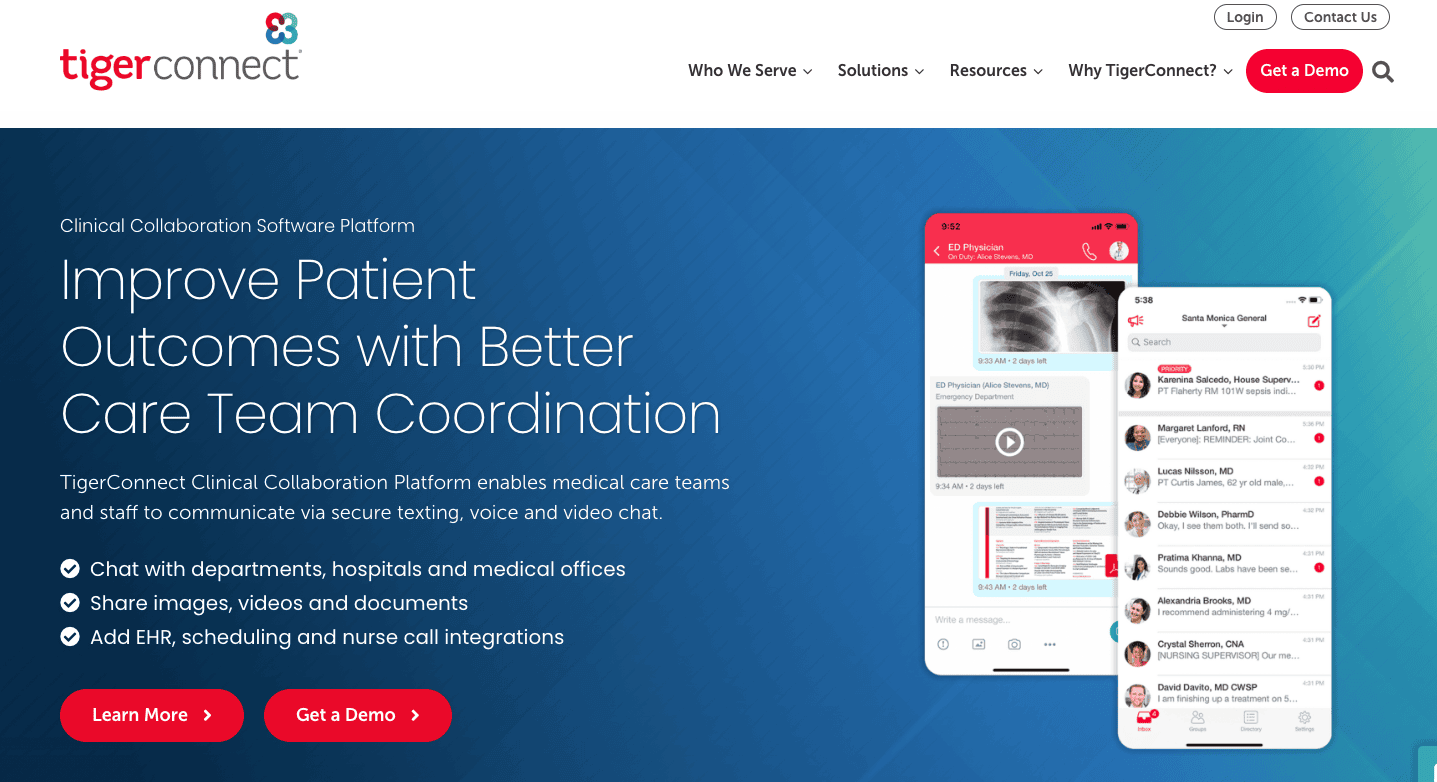
| Security Features | End-to-end encryption, HIPAA compliance |
| Usability (Ease of Use) | High |
| Integration Capabilities | EHR, nurse call systems, critical alerts |
| Support (Customer Service) | 24/7, Training, Resources |
3. Weave
Weave offers an all-in-one communication platform that integrates patient communication with a practice’s existing workflow, making every interaction more efficient.
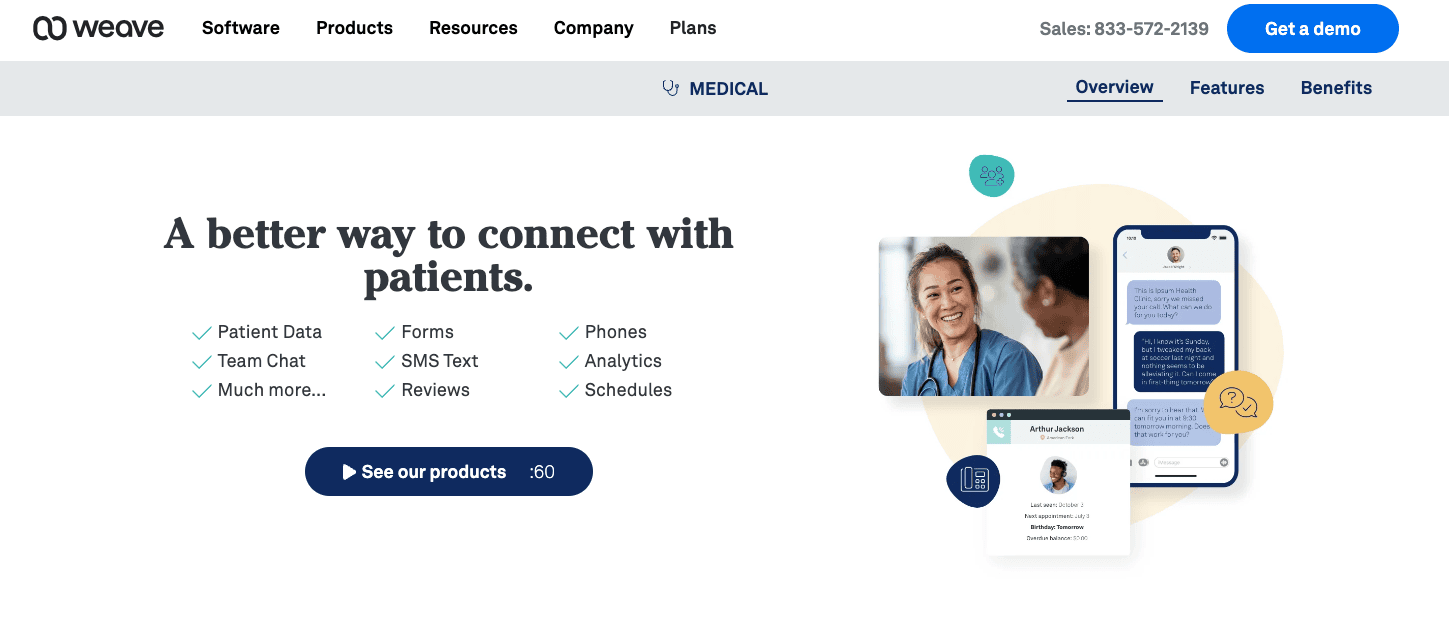
| Security Features | Encryption, HIPAA compliance |
| Usability (Ease of Use) | Moderate |
| Integration Capabilities | EHR, Payment processing |
| Support (Customer Service) | Business hours, Online |
Learn more about HIPAA Compliant Payment Processing for Telehealth Business
4. Paubox
Paubox delivers email security without the need for additional steps from the sender or recipient, ensuring that email communication remains both straightforward and secure.

| Security Features | Encryption, HITRUST CSF certified, HIPAA compliance |
| Usability (Ease of Use) | High |
| Integration Capabilities | Email platforms, EHR |
| Support (Customer Service) | Business hours, Online |
5. Spruce Health
Spruce Health is dedicated to making patient care easier and more personal through secure messaging, telehealth, and a suite of other communication tools.

| Security Features | Encryption, HIPAA compliance |
| Usability (Ease of Use) | High |
| Integration Capabilities | EHR, Practice management |
| Support (Customer Service) | 24/7, Online resources |
6. Practice Better
Practice Better serves the specific needs of health and wellness practitioners by offering secure messaging as part of its comprehensive practice management platform.

| Security Features | Encryption, HIPAA compliance |
| Usability (Ease of Use) | High |
| Integration Capabilities | EHR, Payment gateways, Scheduling tools |
| Support (Customer Service) | Online resources, Email |
7. OhMD
OhMD simplifies communication between healthcare providers and their patients, offering a straightforward, secure messaging solution that improves care coordination.

| Security Features | Encryption, HIPAA compliance |
| Usability (Ease of Use) | High |
| Integration Capabilities | EHR, Practice management tools |
| Support (Customer Service) | Business hours, Online |
8. Buzz Medical Messenger
Buzz Medical Messenger is designed for medical professionals seeking a secure, efficient way to share sensitive information and collaborate on patient care.

| Security Features | Encryption, HIPAA compliance |
| Usability (Ease of Use) | Moderate |
| Integration Capabilities | Limited |
| Support (Customer Service) | Email, Online resources |
9. Luma Health
Luma Health focuses on the patient journey, providing a platform that streamlines appointments, follow-ups, and overall patient engagement through secure messaging.

| Security Features | Encryption, HIPAA compliance |
| Usability (Ease of Use) | High |
| Integration Capabilities | EHR, Practice management, Scheduling systems |
| Support (Customer Service) | 24/7, Online, Phone |
10. Klara
Klara is an innovative platform that prioritizes patient-provider communication, ensuring that every message exchanged is both secure and easily accessible.
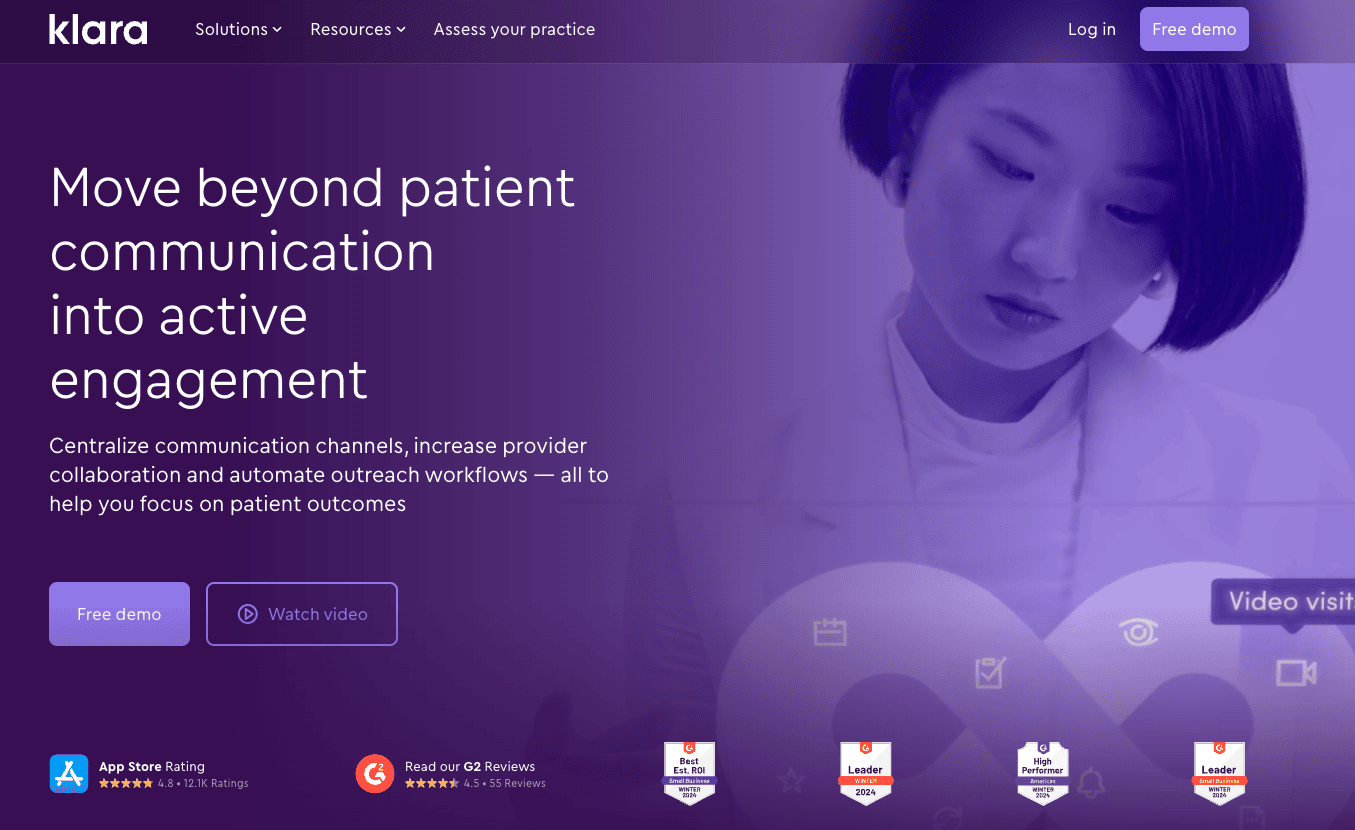
| Security Features | Encryption, HIPAA compliance |
| Usability (Ease of Use) | High |
| Integration Capabilities | EHR, Practice management |
| Support (Customer Service) | Business hours, Online |
11. Updox
Updox offers a suite of communication tools designed for healthcare professionals, aiming to improve productivity while maintaining the security of patient data.

| Security Features | Encryption, HIPAA compliance |
| Usability (Ease of Use) | Moderate |
| Integration Capabilities | EHR, Pharmacy management, CRM |
| Support (Customer Service) | Online resources, Support desk |
12. Artera
Artera stands out by offering secure communication solutions tailored to the unique needs of healthcare providers, facilitating better patient engagement and care coordination.

| Security Features | Encryption, HIPAA compliance |
| Usability (Ease of Use) | High |
| Integration Capabilities | EHR, Lab systems |
| Support (Customer Service) | Email, Phone, Online |
13. Intiveo
Intiveo specializes in optimizing patient communication for dental practices, offering secure messaging that enhances patient experience and practice efficiency.
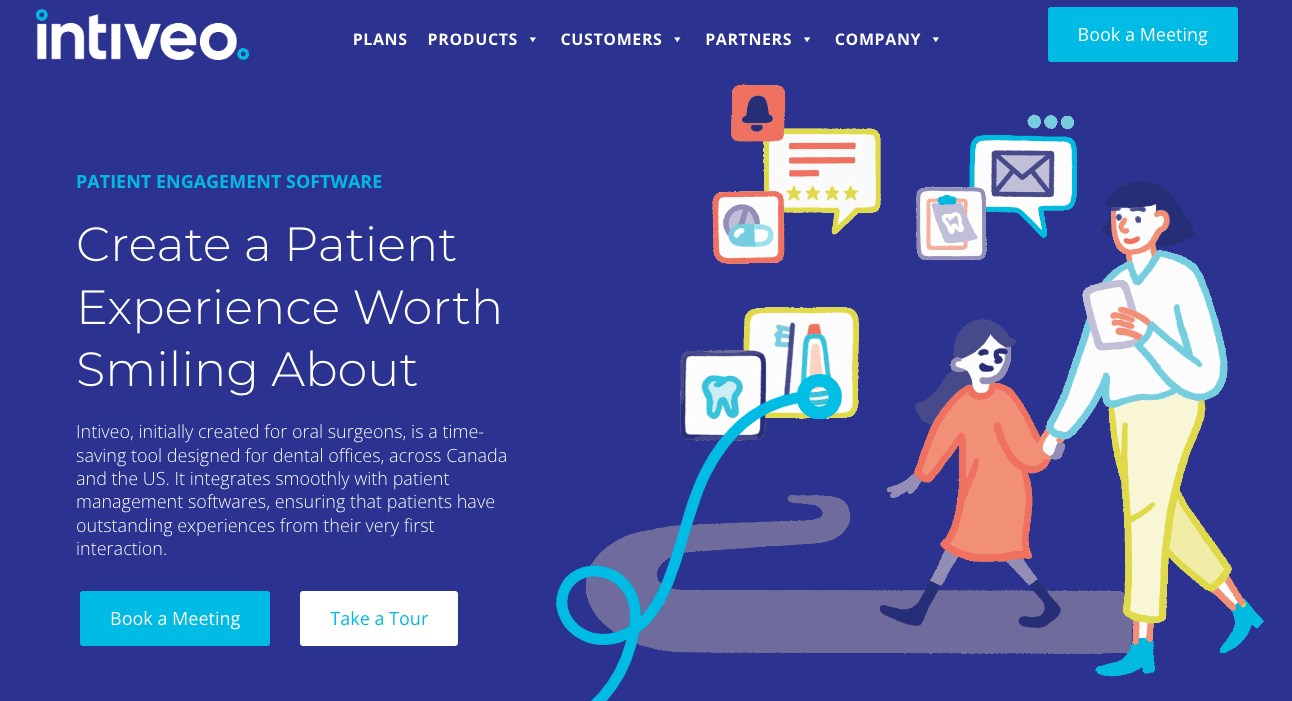
| Security Features | Encryption, HIPAA compliance |
| Usability (Ease of Use) | Moderate |
| Integration Capabilities | Practice management, Dental software |
| Support (Customer Service) | Email, Online resources |
14. Virtru
Virtru provides email and data encryption services, focusing on making digital communication secure without complicating the user experience.
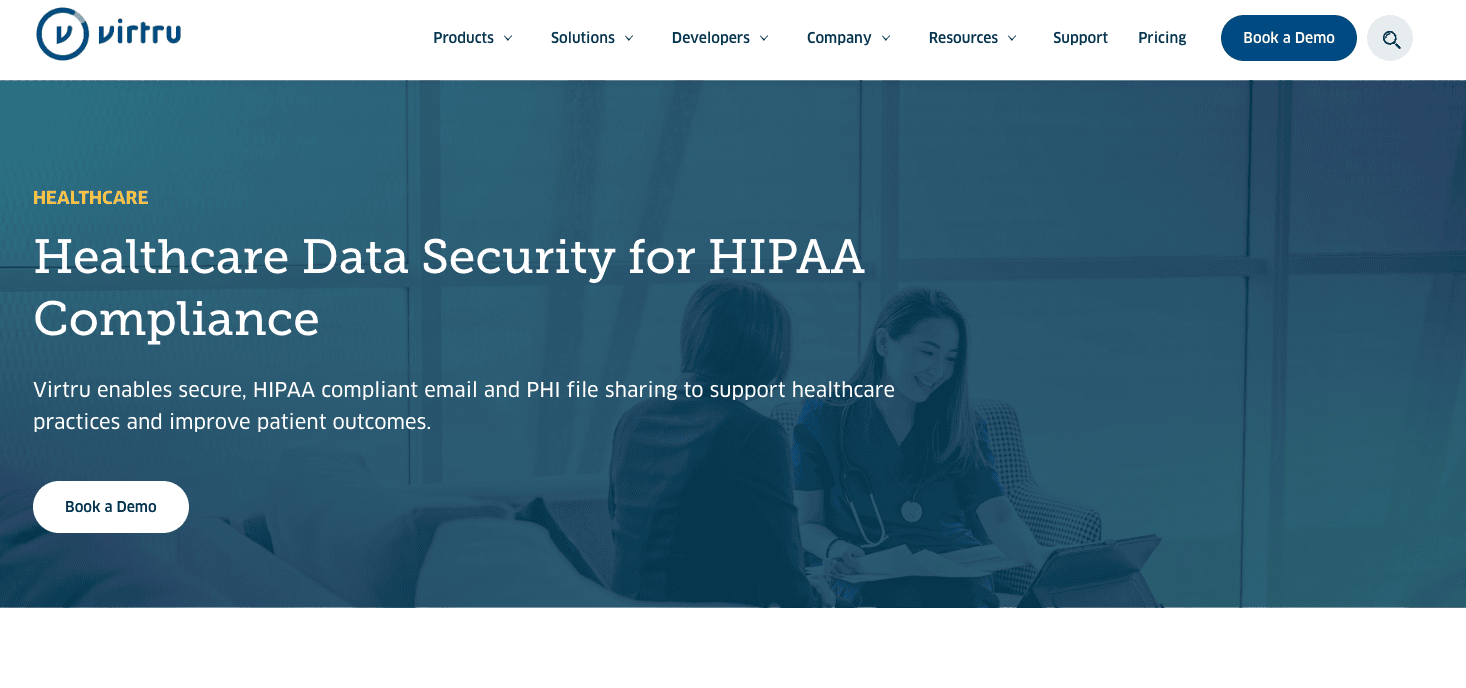
| Security Features | Encryption, HIPAA compliance, Advanced security controls |
| Usability (Ease of Use) | High |
| Integration Capabilities | Email platforms, Google Workspace, Microsoft |
| Support (Customer Service) | Online resources, Training |
15. Celo
Celo is designed for healthcare teams, offering a secure messaging app that supports collaboration and communication while ensuring compliance with healthcare regulations.

| Security Features | Encryption, HIPAA compliance, Advanced security controls |
| Usability (Ease of Use) | High |
| Integration Capabilities | EHR, Clinical systems |
| Support (Customer Service) | 24/7, Online, Phone |
This list is a starting point for comparing these HIPAA-compliant texting apps. Each organization’s needs are unique, and what might be a perfect fit for one might not suit another. It’s crucial to consider specific requirements like the size of your organization, the complexity of your needs, and any specific integrations you require before making a decision. Additionally, engaging with the vendors for demos and trials can provide deeper insights into how each solution might fit your workflow and communication needs.
What To Look For In A Hipaa-Ready Messaging App?
Selecting a HIPAA-compliant messaging application is crucial for protecting patient data as well as maintaining the integrity of healthcare services. Here’s what to keep an eye out for to ensure your messaging app is up for the challenge.
End-To-End Encryption
At the foundation of a secure messaging app is end-to-end encryption. This means messages are scrambled into unreadable code from the moment they’re sent until they reach the intended recipient. This process is akin to transmitting a letter in a secured container to which only the recipient possesses the unlocking mechanism.
Self-Hosted Deployment
For those who desire complete control over their data, self-hosted deployment options allow you to store all information on your own servers. By opting for self-hosted deployment, organizations can house all their critical information on private servers. This method can be compared to storing valuable documents in a personal home safe, which provides direct control and access rather than relying on the external security protocols provided by a bank safe.
Microservices Architecture
An app built on microservices architecture can adapt and scale more efficiently and provide long-term resilience and flexibility. This approach is increasingly popular, as indicated by a report from O’Reilly, which reveals that more than 90% of organizations have adopted or intend to adopt microservices. This concept involves designing a system with interchangeable components, allowing individual elements to be updated or replaced without affecting the entire system.
Compliance with HIPAA and GDPR, ISO 27001 Certification
Adherence to regulations like HIPAA in the U.S., GDPR in Europe, and achieving ISO 27001 certification are non-negotiable. This triple threat of compliance ensures your messaging app meets international standards for data security and privacy. Empeek proudly holds ISO/IEC 27001:2022 certification, exemplifying its dedication to stringent data protection standards.
User Authentication
Strong user authentication measures, such as Multi-Factor Authentication (MFA), play a crucial role in confirming the identity of each user and safeguarding access to sensitive information. The effectiveness of these measures is undeniable. The data shows that MFA can block up to 99.9% of automated attacks, decrease phishing attempts by 75%, and reduce the rate of unauthorized access by 56%.
Access Controls
Granular access controls ensure that only authorized individuals can access certain information. This strategy involves the allocation of specific permissions to distinct areas within a secure environment. This method improves data security by preventing unauthorized access and minimizing the risk of data leakage so that each user has access only to the information needed for their role.
Data Backup and Recovery
In case of an emergency, a robust data backup and recovery system makes sure that no critical information is lost. The importance of such a system is highlighted by a staggering statistic: the average global cost of a data breach is $4.45 million. Implementing a robust backup and recovery strategy protects against data loss as well as mitigates the financial impact of potential breaches.
Business Associate Agreement (BAA)
A BAA is a must-have when dealing with third-party vendors, as it complies with HIPAA and protects patient information as diligently as you do. This agreement serves as a formal pledge between collaborators to protect confidential information. It creates a basis of trust and legal accountability, underscoring the joint commitment of all involved parties to uphold privacy norms.
User-friendly Interface
The best security features are useless if they’re not used. A user-friendly interface guarantees that all team members can easily navigate the app. This approach to design can significantly enhance user engagement, with studies showing that a well-designed user interface can increase conversion rates by up to 200%, and when paired with a good user experience, this increase can soar to up to 400%.
Integration with EHR/EMR Systems
Integration with Electronic Health Records (EHR) or Electronic Medical Records (EMR) systems streamlines workflows and enhances patient care. This integration is becoming increasingly crucial, as in 2021, the global EHR/EMR market was valued at $29,395 million and is expected to reach $47,600 million by 2030.
As such, a HIPAA-compliant messaging app serves as an essential component of modern healthcare, acting as both a protective barrier and a strategic tool for safeguarding patient information. By prioritizing these features, healthcare organizations can be sure they choose a tool that complies with regulations as well as enhances the quality of care.
HIPAA-Ready Messaging App Checklist
To ensure the development and implementation of a HIPAA-compliant messaging app, it’s crucial to follow a comprehensive checklist. This checklist covers the privacy and security of protected health information (PHI) across various safeguard categories including compliance, technical, physical, and administrative measures, alongside privacy protections, incident response, documentation, vendor management, and continuous improvement.
In order ot understand the requirement, we need to understand type of Personal Health Information (PHI) the system use. Here are some of them:
- Social Security Number
- Medical Record Number
- Health Plan Beneficiary Number
- Biometric Identifiers, including fingers and voice prints
- Full face photographic images and any comparable images
Each category in HIPAA-checklist highlights specific actions such as understanding HIPAA requirements, conducting risk assessments, implementing strong encryption and access controls, and regularly auditing for compliance. Below is a checklist to guide the development and implementation of a HIPAA-ready messaging app.
Aсcess Controls
There should be robust access controls to ensure that only authorized users can access PHI. The components of access controls:
- strong passwords;
- biometric authentication;
- multi-factor authentication.
Store all HIPAA authorisations
Stored authorisations must:
- state the classes of people to whom PHI will be disclosed;
- include an expiry date;
- contain the individual’s signature and date of signature.
Audit Trails
Maintain detailed audit trails that track access to PHI, including who accessed the data, when it was accessed, and any modifications made to the data. This helps in monitoring and identifying any unauthorized access.
DataBase Access:
- Region (US only);
- Data type (identified, anonymized);
- Intended purposes, including who will see the results.
Secure Transmission
Ensure that data transmitted between the mobile application and backend servers is done securely using protocols such as HTTPS/TLS to prevent interception or tampering of data.
Data Minimization
Only collect and store the minimum amount of PHI necessary for the intended purpose. Avoid storing unnecessary or sensitive information to reduce the risk of exposure in case of a breach.
Business Associate Agreements (BAAs)
If the mobile application interacts with third-party service providers that handle PHI (such as cloud storage providers or analytics services), ensure that appropriate BAAs are in place to maintain compliance.
Regular Audits and Risk Assessments
Conduct regular audits and risk assessments to identify and address any vulnerabilities or non-compliance issues within the mobile application. This helps in continuously improving the security posture and maintaining compliance with HIPAA regulations.
Common mistakes: SW Risk Management
- Risk control measures (RCM) are not taken into consideration while creating the software requirements.
- Risk control measures are not implemented. The failure in the software can contribute to a hazardous situation, and safety-critical failure could lead to injury or loss of life.
Trainings
For example, ask these questions when thinking about sharing sensitive information:
- Am I authorized to share this?
- Is the other party authorized to receive it?
- Am I certain that they are who they say they are?
- Do we have appropriate confidentiality/non-disclosure agreements (NDAs), contracts, and/or other legal protections in place?
- Have I taken all possible steps to keep the information safe?
- “Should I share this?” rather than, “Can I share this?”
Сhallanges for HIPAA Compliance
| SMS | Requires a 3rd party to administer the messaging. However, patients must be warned that texting is not secure, gain the patients’ authorization, and document the patients’ consent. |
| Social Media | Facebook, LinkedIn, Instagram, Twitter will not sign BAA (Business Associate Agreement) Chatbot could potentially chat about non-PHI details and provide concierge service to a PHI protected site or Tech Support. |
| Alexa | Must involve Amazon with agreement so share ownership with them |
As you can see, developing a HIPAA-ready messaging app is a complex process that requires a deep understanding of the regulations and a commitment to protecting patient privacy. Regularly reviewing and updating your compliance practices in response to new challenges and regulatory changes is essential to maintain the security and confidentiality of PHI.
Your next read: How to Develop a HIPAA-Compliant Telemedicine Platform
Building Your Own Secure Texting For Healthcare
Building your own secure text messaging healthcare app is a significant step to enhancing patient care and staying compliant with regulations like HIPAA. But how do you start, what should you expect in terms of time and cost, and where can you find expertise? Let’s break it down.
How Long Does It Take To Build Your Own Secure Texting For Healthcare?
The timeline can vary widely based on complexity, features, and the development team’s expertise. A basic version could take a few months, while a more comprehensive app with advanced features and integrations might require a year or more. Planning, development, testing, and deployment phases each demand time and attention to detail to guarantee the final product is secure, reliable, and user-friendly.
How Much Does It Cost To Build Your Own Healthcare Messaging App?
Costs can vary significantly depending on the app’s features, the technology used, and whether you’re hiring freelancers or working with a development company. For a robust, secure, and fully featured healthcare messaging app, you could be looking at expenses from tens of thousands to hundreds of thousands of dollars. This includes development, testing, security compliance, and maintenance costs.
How We Can Help
At Empeek, we specialize in developing secure and compliant digital healthcare solutions.
One of our projects for VelloHealth, a HIPAA-compliant digital mental health solution, showcases our expertise in creating secure messaging functionality tailored to healthcare needs. This solution facilitates secure communication between patients and healthcare providers as well as includes features such as appointment scheduling, medication tracking, and patient progress monitoring.

Another example is a project we worked on for GetHealr, a health technology company. It aimed to integrate two healthcare systems, Upvio (Practice Management) and Elation (Electronic Health Record), to synchronize visits and enable communication between users. The solution focused on developing real-time API integration for appointment synchronization so that any changes in one system were instantly reflected in the other. Additionally, efforts were made to integrate messaging functionalities and map user roles across both systems, thereby improving communication and access control.
To conclude, building a secure texting healthcare app is not just about coding; it’s about understanding the unique needs of the healthcare sector, ensuring compliance with strict regulations, and delivering a product that enhances the quality of care.
Bottomline
The protection of patient data with encryption and strict security measures isn’t just a legal requirement; it embodies a fundamental trust between the patient and the healthcare provider. By embracing HIPAA-compliant messaging solutions tailored to the unique needs of your organization, you elevate the efficiency of your operations and the very standard of care you deliver.
Although the HIPAA-compliant messaging apps mentioned above offer solid solutions, each hospital has its own specific needs. Opting for a tailored healthcare messaging platform often provides the most advantage.
Leveraging our wide-ranging experience in creating custom HIPAA-compliant messaging applications, we’re here to assist you, regardless of whether your needs are for a straightforward messaging app or more elaborate, advanced software. Reach out for a free consultation, and let’s empower your healthcare organization to excel in this digital age, where secure texting in healthcare is the heartbeat of exceptional patient care.








